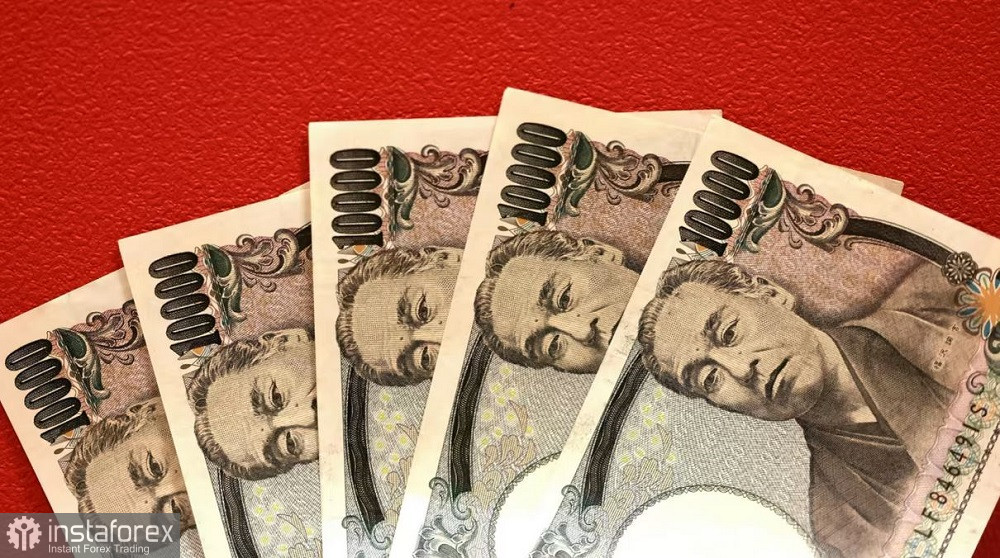The Bank of Japan was not on the yen's side. Following the results of the September meeting, the Japanese central bank left rates unchanged and voiced rather vague remarks, thereby disappointing many market participants.
On the one hand, traders have long been accustomed to such "passing" meetings of the Japanese central bank. The BOJ is the only major central bank that has had negative rates for many years, and BOJ Governor Kazuo Ueda's stance has only slightly tweaked his stance – he repeated the mantra that the Bank was ready to further soften monetary policy if necessary. Even during the period of inflationary growth, when the central banks of the leading countries of the world raised rates, the BOJ stood as an outlier, remaining faithful to the accommodative policy.

After Ueda took the helm of the BOJ, the market started talking about possible changes. And Ueda also hinted at the probable calibration of the monetary policy. Let me remind you that the first bells sounded during Kuroda's cadence – in December 2022, the Bank unexpectedly changed the target range of yields on 10-year Japanese government bonds. For the Japanese central bank, such changes were almost revolutionary in nature. But there was no follow-up. Ueda replaced Kuroda in April, who essentially kept the course of his predecessor. He has tightened his rhetoric a bit, but in general he has not announced any drastic changes. Until recently.
So, in early September, in an interview with Japanese media, Ueda said that the Bank could curtail the policy of negative interest rates – when it realizes that it is close to achieving the goal of stable inflation at 2%. Moreover, Ueda even outlined an approximate time frame. According to him, by the end of this year, most likely in December, the Bank will have enough information "to decide whether it is possible to abandon the negative rate."
This statement was quite interesting, given the fact that the BOJ has been implementing an ultra-soft monetary policy for many years (in fact, during Kuroda's two terms of office). The yen's reaction was not long in coming: literally in a day, the USD/JPY pair fell by more than 200 points.
Afterwards, traders switched to American events – the dollar began to strengthen ahead of the Federal Reserve's September meeting (which subsequently "did not let down" the greenback, announcing a rate hike). The pair recouped losses and smoothly began to climb up, eventually reaching the resistance level of 148.50 (the upper line of the Bollinger Bands indicator on the daily chart) is the peak since October 2022.
And yet, given Ueda's previous stance, the bears pinned certain hopes on the September meeting. But it came to naught: the Bank left the monetary policy parameters unchanged, kept the key rate at -0.1% and kept the target yield level of 10-year Japanese government bonds at 0%. Assessing the future prospects, Ueda noted that the Board of Governors "has not yet determined which variable will lead to achieving 2% inflation and ending the policy of negative interest rates." In this context, he means that they will only consider rate hikes once inflation reaches the 2% level.
Meanwhile, inflation in Japan is in no hurry to fall to the target level. So, a few hours before the announcement of the results of the September meeting, Japan released its inflation report. On an annual basis, the Consumer Price Index fell to 3.2% in August, against expectations of 3.0%. Since February, the indicator has been fluctuating in the 3.2-3.5% range, so there is no need to talk about a downtrend here. The CPI excluding fresh food prices has been fluctuating in its range since February (3.1-3.4%). In August, it remained at 3.1% with a forecast decline to 3.0%. The CPI excluding food and energy came out at 4.3%, unchanged from the result of the previous month (4.3%).
Such results in August did not help the BOJ's case. Consequently, any talk about possible changes in the BOJ policy in the near future has no basis. The cautious formulations voiced by Ueda serve as an additional confirmation of this.
All this suggests that the pair retains the potential for further growth. Not only due to the greenback's strength, but also due to the yen's weakness. The BOJ was not on the yen's side, so traders are forced to focus on the dollar's dynamics, which has received support from the Fed.
"Technique" also points to the bullish bias. On all higher time frames (from 4H and above), the pair is located between the middle and upper lines of the Bollinger Bands indicator. In addition, on the 4-hour and weekly charts, the Ichimoku indicator has formed one of its strongest bullish signals, the "Parade of Lines". Therefore, it is advisable to use any corrective pullbacks to open long positions with 148.70 as the first target (the upper line of the Bollinger Bands indicator on the daily chart). The main target is 100 points higher, at 149.70 – this is the upper line of the Bollinger Bands on the weekly chart.





















